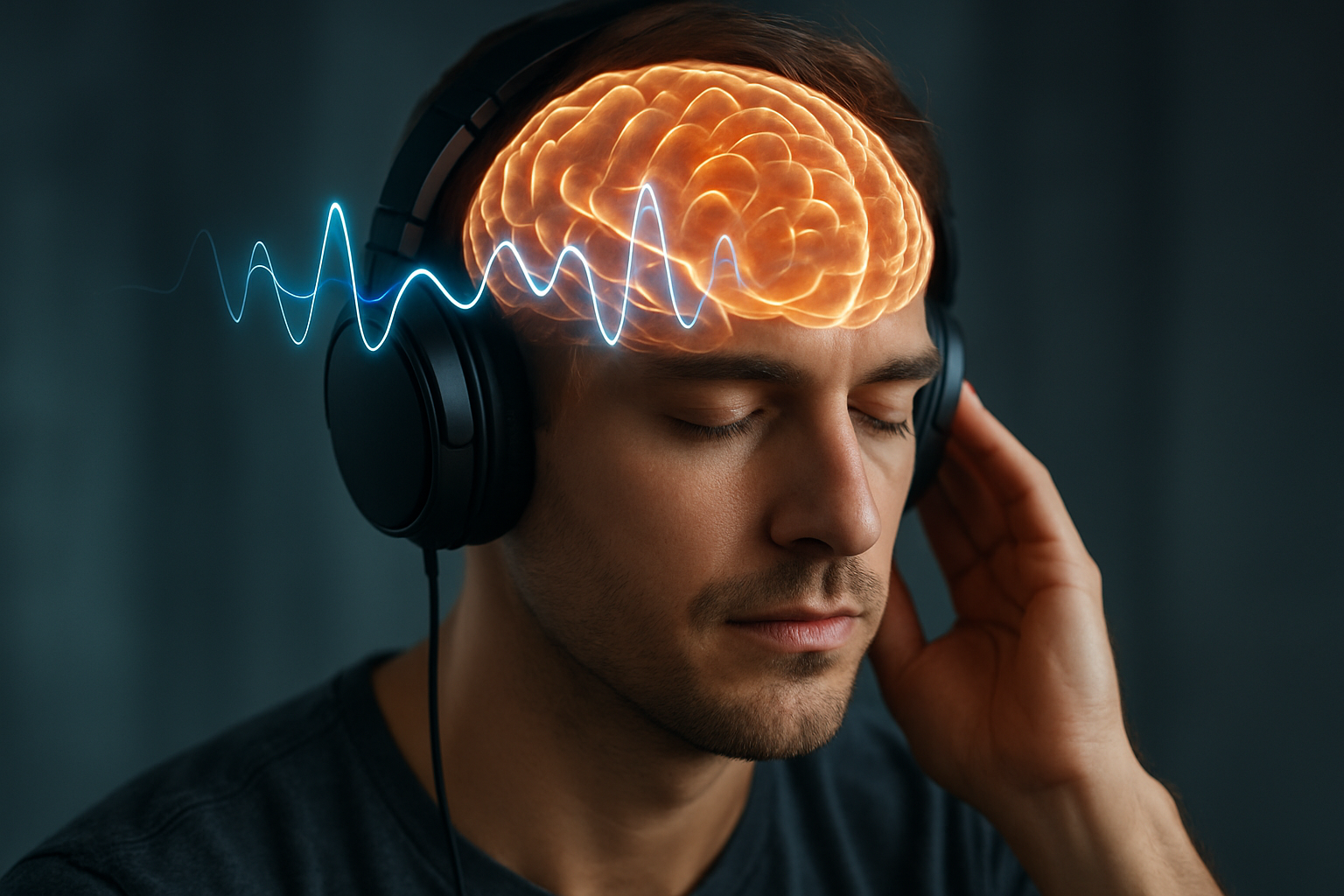Binaural Beats: Tuning Brain Waves for Optimal Performance
Can sound waves really reshape your mental state? Imagine donning headphones and experiencing a surge in focus, creativity, or relaxation within minutes. This isn't science fiction—it's the intriguing world of binaural beats, a cutting-edge auditory technique that's capturing the attention of neuroscientists and wellness enthusiasts alike. Let's dive into the science behind this sonic phenomenon and explore its potential to revolutionize our approach to cognitive enhancement and stress management.

For example, if a 440 Hz tone is played in one ear and a 444 Hz tone in the other, the brain perceives a 4 Hz binaural beat. This frequency falls within the theta brainwave range, associated with deep relaxation and meditation. The brain’s natural tendency to sync with external rhythms, known as entrainment, is the key principle behind binaural beats’ potential effects.
Brainwave Patterns and Cognitive States
To understand binaural beats’ impact, it’s crucial to grasp the basics of brainwave patterns. Our brains constantly emit electrical impulses at various frequencies, each associated with different mental states:
Delta waves (0.5-4 Hz): Deep sleep and unconsciousness
Theta waves (4-8 Hz): Drowsiness, meditation, and creativity
Alpha waves (8-13 Hz): Relaxation and light meditation
Beta waves (13-30 Hz): Normal waking consciousness and focused attention
Gamma waves (30-100 Hz): High-level information processing and cognitive performance
Binaural beats aim to induce specific brainwave patterns, theoretically shifting the listener’s mental state to align with the desired frequency.
Research and Potential Benefits
While more research is needed, preliminary studies suggest binaural beats may offer several potential benefits:
Improved focus and attention: Beta frequency binaural beats have shown promise in enhancing concentration and reducing mind-wandering.
Stress reduction: Alpha and theta frequency beats may help induce relaxation and reduce anxiety.
Enhanced creativity: Theta frequency beats are associated with increased creative thinking and problem-solving abilities.
Better sleep quality: Delta frequency beats might assist in promoting deeper, more restful sleep.
Memory enhancement: Some studies indicate that gamma frequency beats could potentially improve short-term memory retention.
Pain management: Certain frequencies may help modulate pain perception, offering a non-pharmacological approach to pain relief.
Practical Applications and Usage
Incorporating binaural beats into daily life is relatively straightforward. Many apps and online platforms offer pre-recorded binaural beat tracks designed for specific purposes, such as focus, relaxation, or sleep induction. To experience the effect, listeners must use stereo headphones, as the technique relies on delivering different frequencies to each ear.
It’s important to note that while some individuals report immediate effects, others may require regular practice to notice benefits. As with any wellness technique, consistency and an open mind are key.
Limitations and Considerations
While binaural beats show promise, it’s crucial to approach them with a balanced perspective:
Individual variability: Not everyone responds to binaural beats in the same way. Factors like personal brain chemistry and hearing sensitivity can influence effectiveness.
Quality of research: While many studies show positive results, more large-scale, rigorous research is needed to fully understand binaural beats’ effects and optimal usage.
Potential side effects: Some users report headaches or dizziness, particularly with extended use. It’s advisable to start with short sessions and gradually increase duration.
Contraindications: Individuals with epilepsy or other seizure disorders should consult a healthcare professional before using binaural beats, as certain frequencies could potentially trigger seizures.
The Future of Acoustic Neuromodulation
As research in neuroscience and acoustic technology advances, binaural beats represent just the beginning of sound-based cognitive enhancement. Emerging technologies like isochronic tones and amplitude-modulated music are expanding the toolkit for non-invasive brain stimulation.
The potential for personalized, AI-driven sound therapies tailored to individual brainwave patterns is an exciting frontier. Imagine a future where wearable EEG devices could continuously monitor your mental state and seamlessly adjust audio input to optimize cognitive performance throughout the day.
Sonic Wellness: Quick Tips and Fascinating Facts
• Start with 15-30 minute sessions to gauge your response to binaural beats
• Experiment with different frequencies to find what works best for you
• Combine binaural beats with meditation or relaxation techniques for enhanced effects
• Binaural beats can be masked with nature sounds or white noise for a more pleasant listening experience
• The phenomenon of binaural beats was first discovered in 1839 by Heinrich Wilhelm Dove
• The human brain can detect frequency differences as small as 1 Hz between ears
• Some animals, like owls, use natural binaural processing for precise sound localization
• NASA has explored using binaural beats to improve astronaut focus and sleep quality in space
As we continue to unlock the mysteries of the brain, techniques like binaural beats offer an intriguing glimpse into the power of sound to shape our mental landscape. While not a magic bullet, this innovative approach to cognitive enhancement and stress reduction represents a promising frontier in non-invasive neuromodulation. As research progresses, we may find ourselves on the cusp of a new era in acoustic wellness, where the right frequencies could unlock our full cognitive potential.





